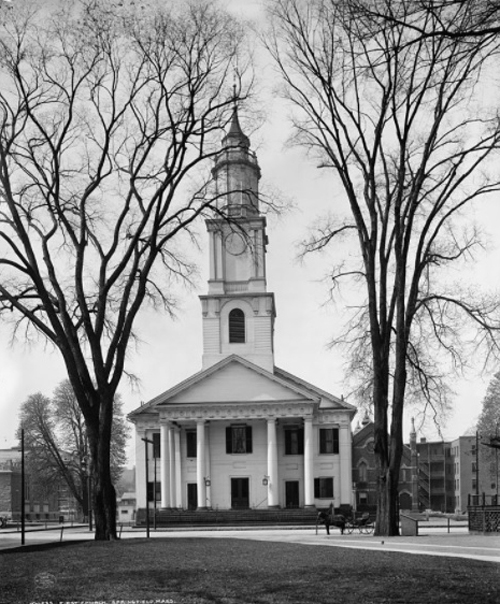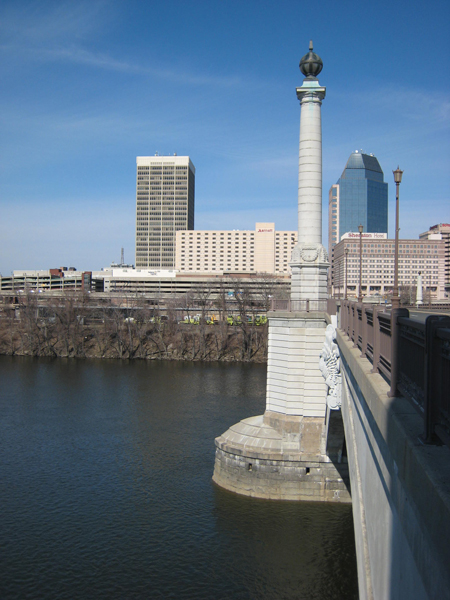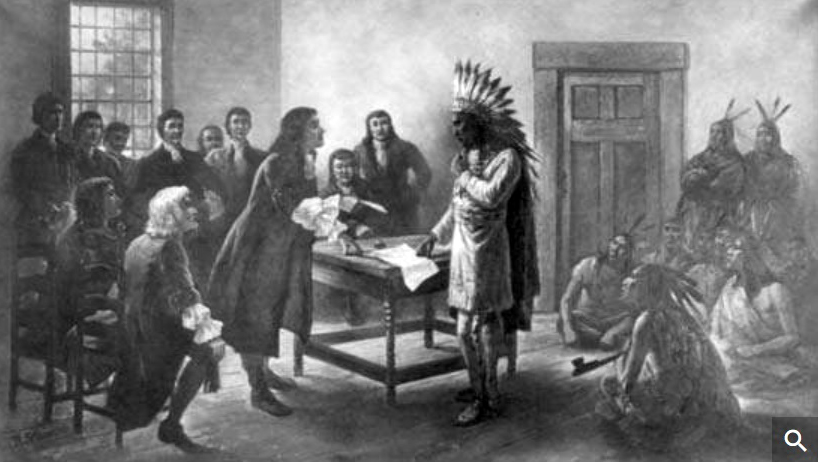This is the second in a series of posts about four generations of my ancestors in colonial Massachusetts and Connecticut. It includes the Bagg, Burt, Phelps, Moseley, Stanley and other related families between 1635 and 1795.
When Springfield, Massachusetts pioneer Henry Burt died in 1662, an inventory of his estate showed that his belongings included a suit of clothes, a hat, a pound of hemp and flax, his house in the town and 14 acres of farmland nearby, livestock, three blankets and a rug, a brass pan and kettles, a chest and two guns.1 That list suggested Henry had lived a simple, but comfortable, life.
Henry probably brought his family to New England in 1638. Prior to that, he had been a successful clothier in Harberton, Devon, in southwest England, where he had inherited property from his father.2 At the time they immigrated, he and his wife, Ulalia March, had seven children ranging in age from an infant to 18 years old.
England was going through political turmoil in the 1630s, and the textile industry was in decline. Over a ten-year period, some 80,000 people left England for Ireland, the West Indies, Virginia or continental Europe. Between 1630 and 1640, some 20,000 people, many of them members of families with children, went to New England.

Henry Burt and many other migrants also left for religious reasons. In England, members of the Congregational church were persecuted for their beliefs. In New England, where they were known as Puritans, they could worship as they pleased and build a new society based on their religious values. Henry was undoubtedly a Puritan since records show he became a deacon, or lay leader, of the Congregational church in Springfield.
Henry was born around 1595, the son of clothier Henry Burt Sr. and his wife Isett. Henry Sr. died in 1617, leaving his son an orchard and gardens, a mansion house and several other houses that were rented out.
He married Ulalia (sometimes spelled Eulalia) March on December 28, 1619, in the nearby parish of Dean-Prior.3 Ulalia had been born about 1600 to Richard March and Joan (Martyn?) of Sherford, Devon.4
Before they left England, the Burt family probably sold or rented most of their possessions to help raise money for the trip. They had to take along enough food to feed the family for a year, as well as clothing, tools, livestock and other basic supplies.
The average transatlantic voyage took eight to 10 weeks in a ship that carried about 100 people and their supplies. Most new immigrants stayed in the Boston area until they got their bearings, and the Burts were no different, settling in nearby Roxbury. Perhaps they wondered whether God had sent them a message when the Roxbury house in which they were living burned down in September, 1639.5
The following year, they settled in Springfield, on the Connecticut River. The land was fertile there and, like his new neighbours, Henry became a subsistence farmer. My eight-times great-grandfather, he eventually became one of the town’s leading citizens.
Henry first appeared in the town records when he was allotted a planting lot in 1641. He acquired further agricultural land grants in 1642, and in later years. The family home was on the town’s main street, and Henry acquired farmland on both sides of the river.
In 1644, Henry Burt and three other men were elected as selectmen, or town officials.6
Serving as a selectman for ten years between 1644 and 1655, he was responsible for handling local issues such as taxation, land distribution, fencing regulations and road building. When Henry became a freeman in 1648, he became eligible to vote.
In 1649, Henry became Springfield’s first Clerk of the Writs.7 This was an elected position that involved issuing summonses and recording births, marriages and deaths. He held this position continuously until his own death in 1662. He was also a deacon of the church and, for several years in the 1650s when the First Church of Springfield did not have a minister of its own, he was one of several men chosen to conduct services.8
Besides these activities, Henry had a large family to support. He must have been a hard worker, raising his own crops and livestock and, like many other Springfield inhabitants, working for merchant William Pynchon or his son John. Pynchon owned the only store for miles around, and he also owned the mill and the blacksmith shop. Pynchon generally paid employees in store credits, and Henry purchased precious nails, a pane of glass and the occasional treat, such as sugar.
Henry and Ulalia had a total of 13 children, nine of whom were born in England, and two of whom died there. Daughter Hannah, the first of their children to be born in New England, married John Bagg in 1657. She was my direct ancestor.

When Henry died on April 31, 1662, he left part of his estate to son Nathaniel and the rest to his widow. His possessions were valued at 181 pounds, while his debts, primarily to merchant John Pynchon, came to 50 pounds.

Ulalia lived another 28 years, dying Aug. 29, 1690, but she prepared her will six years before her death. She listed individual bequests including a heifer for daughter Mary, two cows for daughter Sarah and, to daughter Abigail, a cloak, a green apron, a coat and a shift. Daughter Patience received her red stockings. Ulalia divided her land, cattle and kettles between her sons and requested that the rest of her estate be divided according to the needs of her survivors.9
Ulalia’s will did not mention daughter Hannah Bagg or Hannah’s husband John because both were already deceased, but she did want granddaughter Abilene Bagg to receive two yards of cloth.
This article is also posted on www.genealogyensemble.com
See also:
Janice Hamilton, “John Bagg of Springfield, Massachusetts,” Writing Up the Ancestors, Feb. 22, 2018, https://www.writinguptheancestors.ca/2018/02/john-bagg-of-springfield-massachusetts.html
Notes:
I was able to find an amazing amount of detail about Henry Burt’s life thanks to the careful record-keeping of the early settlers of Springfield, and to the fact that, 120 years ago, another Burt descendant used those records to write two books about the Burt family and the town of Springfield.
For background on New England’s Great Migration, see https://www.greatmigration.org/new_englands_great_migration.html. You can find details on the individuals who moved to New England between 1620 and 1640 in the multi-volume study of the Great Migration published by the New England Historic Genealogical Society, and members of the NEHGS can access the society’s extensive online database.
The children of Henry and Ulalia Burt were:10
Sarah, b. Harberton 1620/21, m. 1. Judah Gregory of Springfield, 2. Henry Wakley of Hartford and Stratford, Ct. Sarah was living in 1689.
Abigail, b. in England about 1623, m. 1. Francis Ball of Springfield, Mass. In 1644
BenjaminMunn of Springfield in 1649, 3. Lieut Thomas Stebbins, in 1676.
Jonathan, bapt. Harberton 1624/25. d. 1715. m 1. Elizabeth Lobbell, in Boston, 1651, 2. Deliverance Hanchet, 1686.
Samuel, buried Harberton, 1625.
David, bapt Harberton, 1629, d. 1690. moved to Northampton. m. Mary Holton, 1655.
Mary, bapt. Harberton, 1632, buried there 1634
Mary, bapt. Harberton, 1635, d. 1689; m. William Brooks in 1654 of Springfield and Deerfield, Mass.
Nathaniel, bapt Harberton c. 1637, d. 1720; m. Rebecca Sikes, 1662.
Elizabeth, bapt. Harberton, 1638, m. 1. Samuel Wright Jr. of Springfield and Northampton, 2. Nathaniel Dickinson of Hatfield, Mass.
Hannah, b. Springfield, 1641 m. 1657, John Bagg of Springfield.
Dorcas, b. New England, 1643?, m. 1658, John Stiles of Windsor, Ct.
Patience born Springfield, 1645, m. 1667 John Bliss of Northampton and Springfield.
Mercy, b. 1647, Springfield, m. 1. 1666/7 Judah Wright of Northampton and Springfield.
Footnotes:
- Henry M. Burt, Silas W. Burt. Early Days in New England. Life and Times of Henry Burt of Springfield and Some of His Descendants, Springfield: Clark W. Bryan, printers, 1893, Google Books, p. 92-93.
- George Skelton Terry, “Genealogical Research in England: Burt-March” The New England Historical and Genealogical Register, 1932, vol. 86, Boston, MA: New England Historic Genealogical Society, 1847-, p. 218. (Online database: AmericanAncestors.org, New England Historic Genealogical Society, 2001-2013.)
- Terry, Ibid, p. 83.
- Mary Lovering Holman, Ancestry of Colonel Harrington Stevens and his wife Frances Helen Miller, compiled for Helen Pendleton (Winston) Pillsbury, 1948, privately printed, p. 365.
- Terry, Ibid, p. 219.
- Burt, Early Days in New England, p. 85.
- Henry M. Burt, The First Century of the History of Springfield. The Official Records from 1636 to 1736, with an historical review and biographical mention of the founders.Volume 1. Springfield, Mass: Printed and Published by Henry M. Burt, 1898, Google Books, p. 45-46.
- Burt, Early Days in New England, p. 87.
- Burt, Early Days in New England, p. 93.
- Terry, Ibid. p. 219.
Photo Sources:
First Church of Christ Congregational. View of the church around 1908, Detroit Publishing Company, https://www.loc.gov/pictures/collection/det/item/det1994020415/PP/, https://en.wikipedia.org/wiki/First_Church_of_Christ,_Congregational_(Springfield,_Massachusetts)#/media/File:First_Church_Springfield_c1908.jpg
Hannah’s birth: Henry M. Burt, Silas W. Burt. Early Days in New England. Life and Times of Henry Burt of Springfield and Some of His Descendants. p. 115.
Henry’s death: Henry M. Burt, Silas W. Burt. Early Days in New England. Life and Times of Henry Burt of Springfield and Some of His Descendants. p. 91.


